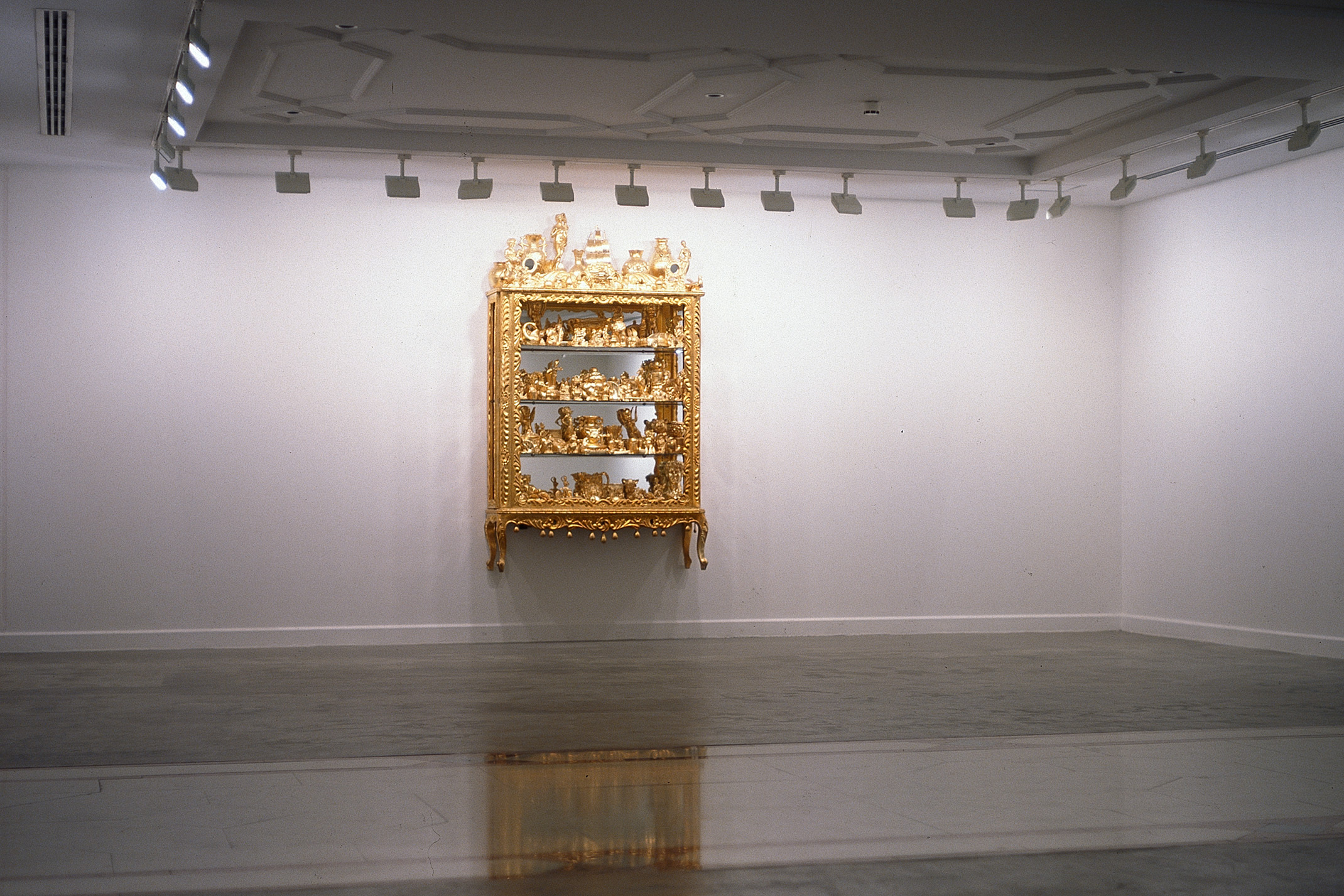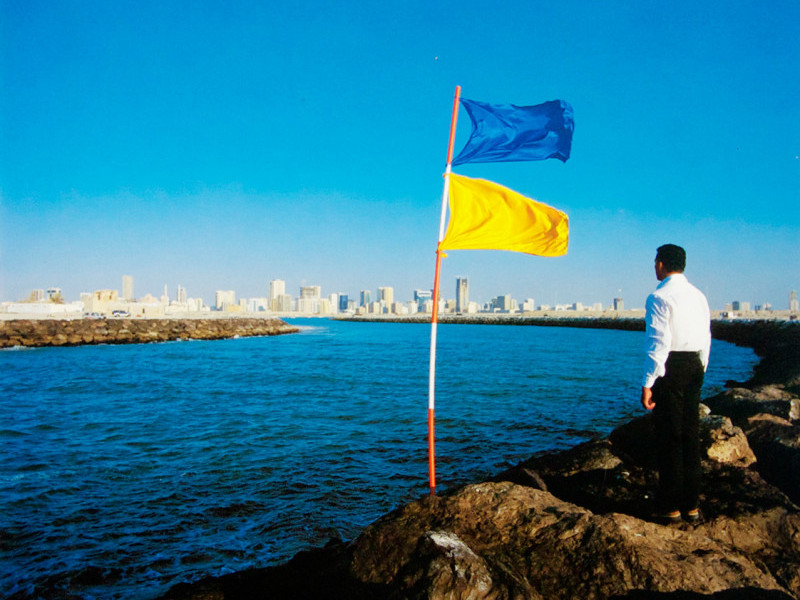
Golden Love Super Deluxe, 2002
Farhad Moshini
Golden Love Super Deluxe, 2002
Installation view
search


Farhad Moshini
Golden Love Super Deluxe, 2002
Installation view
Cultural Revolution in Tehran Sign of the times
The softening of censorship in Iran has permitted the emergence of artists who are distanced from "official Islamic Art".
It's a mountain of objects, covered with gold leaf. In front of the window of the little art gallery in Vanak Street not far from the centre of Tehran, pedestrians stop to look at the new work exhibited. The hurried ones poke their heads inside and ask whether it is for sale as wedding decoration. The curious take the time to enter and discover a second mountain of gold. From close up one can suddenly recognize all the familiar objects; robots, Mickey Mouse figurines and miniature cars. We are in the kingdom of kitsch, with syrupy music in the background, in the heart of the Islamic Republic of Iran.
Leaning against the wall with arms crossed, Farhad Moshiri is amused by the visitors' reactions. At 37, the creator of this installation still has the devilish face of a child who has just pulled a trick on his parents. "I am inspired by the popular culture of post revolutionary Iran", he says. "These objects are everywhere. In shop windows, as decoration on the mantlepiece in peoples' homes, the colour gold IS always dominant. In the Iranian society, there is this lack of simplicity, this need to show off in excess certain values that are taken from the west, even among the most traditional and religious families."
One quickly thinks of Ayatollah Khomeyni's mausoleum, the leader of the Islamic Revolution in 1979. A gigantic golden dome flanked with little souvenir shops, selling plates, stickers and pins with Khomeyni's effigy, which gives an Islamic 'Disneyland' air to this holy place. Farhad obviously refuses any comparison but he is indeed representative of a new generation of Iranian artists directly influenced by their daily surroundings.
Profiting from the softening of censorship, more than sixty art galleries which have opened during the Khatami years, (elected President in 1997 and re-elected for four more years last June), feel equally more free to exhibit works by engaged artists.
Delphine Milloui/Telerama no 271l/France Dec. 26 2001

Sharjah Biennial 6